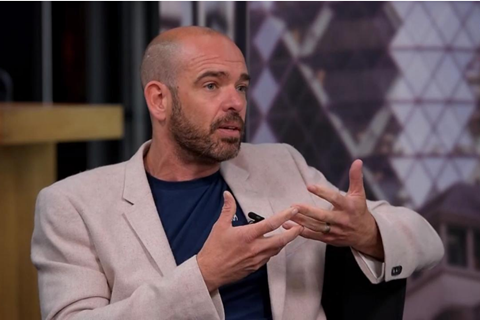As 2018 draws to a close, it’s time to look ahead – and try to pick out some of the likely themes and trends for 2019 in the broadcast and production sectors.
IBC365 canvassed senior industry figures for their take on what to expect in 2019. We’ve contributions below from 10 companies such as OTT leader Netflix, superindie producer Endemol Shine and digital pioneer MTGx through to telco and broadcaster BT, vfx house BlueBolt and media technology firm MediaKind.
Our contributors flag up many trends to expect in 2019, from the roll out of 5G through to the rise of Generation Z as global trend-setters. Others warn of a squeeze on profits for TV firms, or argue that AI will move from hype to reality. Most agree, however, that the technical changes we can expect in the year ahead will make it easier than ever for consumers to access and enjoy content - anytime, anywhere and on any-screen.
Maria Ferreras
Netflix
Vice President of Business Development EMEA

“I’ve broken down the topline trends of 2019 into three distinct categories: consumer technology, infrastructure, and content. Firstly, the consumer will be at the heart of technology next year. Successful services will give consumers easier to understand and more personalised offers. At home, consumers will be offered truly convergent experiences for all devices, services and different networks. Set-top boxes will be adding more capabilities to become super multi-devices with multiple home purposes like the new Freebox Delta. Meanwhile, telcos will offer mobile only plans for more freedom in data consumption with close to ‘unlimited capacity’.
Secondly, infrastructure for delivering content will also improve. Fibre to the home (FTTH) deployment will bring high speed to more homes, while 5G is expected to start roll out in 2019.
As for content itself, technology will be applied more and more to improve production efficiency. Content production will continue to decentralise, allowing for more diversity in type of content, country of origin and original language. Dubbing will be seen as a key to improving content ‘travelability’. Animation will be built with new technology to improve deployment times. And there will be more OTT services from local, regional and global players, but not necessarily from new companies.”
Kim Shillinglaw
EndemolShine UK
Director of Factual

“I think we are going to see a lot more live TV events as traditional broadcasters look for a point of difference from the streamers. I also think the search for factual entertainment renewal is going to sharpen. It has been a while since there has been a breakthrough in the factual entertainment space. It feels like factual entertainment renewal will acquire more urgency in 2019.
As for challenges in 2019, how are the public service broadcasters going to manage the growing tension between ambitions and budgets? It’s great to see creative ambition, but at the Edinburgh TV Festival this year, one of the biggest gripes from the indie sector was about overspend that broadcasters are not paying for. All of the channel controllers pledged on stage to start honouring overspend – but I don’t know if that has happened. The tension between price point for shows and ambition is reaching breaking point in the UK.
And finally, will broadcaster confidence recover or not? UK PSBs have some real advantages and strengths yet there is a lot of ‘Netflix is going to eat us alive’ thinking among British broadcasters. I am sceptical about whether that is merited, certainly in the unscripted space.”
Jette Nygaard-Andersen
MTGx Digital Video Content
EVP and CEO

“2019 will be the year when Generation Z takes over as a global trendsetter on social media and messaging platforms. From vertical videos and shoppable content to micro-moment storytelling, Gen Zs will drive interactivity and content creation on their ultimate device - smartphone. Live entertainment will be as popular as ever, adding augmented reality elements and streaming immersive experiences to the switched-on communities all around the world.
Social media and messaging platforms will strengthen their position as entertainment hubs with features that enable live group interaction.
Vertical video will become the new normal in content consumption and production.
Generation Z is coming of age, being raised by social media. Content should be shoppable as they seek to purchase what they see in the content they consume – easily and instantly.
Storytelling for micro-moments is a new genre of immersive, interactive and cross platform entertainment.
Micro-influencers will launch “Big Little Ideas” and become direct-to-consumer brands in their own right within niche, but highly loyal and engaged, fans.
Esports is entering mainstream with the global esports audience growing and esports content evolving in quality and new formats. New eSports communities will arise on all levels and more girls will enter the sport.”
Leon Forde
Olsberg SPI
Associate Director

“We have seen significant growth in film and television drama production in recent years and the expectation is that this will continue, particularly given voracious consumer appetite and strong production investment. With so much film and television production occurring internationally, production incentives will continue to be a key policy focus as markets around the world take advantage of the global production deluge.
One major linked theme is a focus on capacity. Given the current production opportunity it is essential that countries and regions build their workforce and infrastructure capabilities. Features and television drama can require a significant volume of skilled workers across diverse areas, as well as talent, services and facilities. This creates unique and significant value for hubs that can service such projects — but it is also critical that capacity development is a strategic priority to ensure that opportunities are not missed.”
Matt Stagg
BT Sport
Director of Mobile Strategy

‘5G will arrive in the UK in 2019. And even though we’re at a fairly early stage of the technological maturity, 5G can have a significant impact on the broadcast industry in the next 12 months. 5G coverage will be targeted at the busiest parts of the busiest cities, but there will be enough to give broadcasters a flavour of what this new wireless capability can enable.
The most immediate benefit will be to enable remote production - 5G would allow the broadcaster to only send the cameraman and reporter instead of a whole production crew. The footage can get back to the studio in a fraction of the time it takes a physical transfer. With a 5G-enabled camera you are ready to film as soon as you step out of the car. 5G could be the difference between an exclusive and a ‘me too’. Or the difference between a crew of 70 and 7.
A live production needs bandwidth and latency, and while that can be enabled on 4G, it can’t be guaranteed.
Future developments to 5G, using network slicing in a 5G core, will provide a dedicated broadcast-grade network that will give that guarantee of performance. Before that, the massive increase in bandwidth that 5G brings will give the impression of infinite capacity, and broadcasters will use that.
5G will be used even in stadiums that have direct fibre back to the studio, so that broadcasters can get mobility and flexibility in the stadium.
Having true mobility on cameras has opened up new creative opportunities: the director can move around and provide much more interesting and unique content before, during and after the event. 5G-connected cameras will mean we see new content that will give fans a whole new perspective on sports broadcasting.”
Mike Darcey
M247
Chairman

“A general squeeze on aggregate revenue and profit across the TV industry is on the way. Those hoping that current pressures on TV ad revenue are cyclical will be disappointed as the inexorable growth of digital can only come at the expense of TV. And paid-for revenues will continue to suffer from the switch from big bundles to cheaper OTT offerings.
On the cost side, the excess investment in content, driven by a new shareholder mentality and new business models unrelated to television, means that content costs are rising for all. And the total fixed costs of distribution keep growing as we fund new platforms and modes of consumption without the old models being eliminated.
Some might escape this squeeze by tapping growth opportunities outside the system, either on the product of geography side. Otherwise, growth will depend on stealing someone else’s share of a static or shrinking pie.”
Lucy Ainsworth-Taylor
BlueBolt VFX
Managing Director

“BlueBolt, like other companies of the same size, has had a steady growth in the last few years. The work is certainly out there, yet the dips are always a concern when you cannot foresee how long they may last for. Carrying a large payroll through these times can be debilitating on top of the company’s annual running costs. Although the boom in high-end television is exciting and coming fast, I like many others are concerned there will just be too much content. Managing our growth going forward is tricky especially as the talent pool is limited across the board. This is leading to a lot of poaching from other companies offering higher salaries to people without relevant experience.”
Donald Begg
NEP Group
Director of Technology

“2019 will see continued growth in products that have native IP interfaces, but I do not expect the SDI interface to disappear anytime soon.
With more products having native IP connectivity, (conforming to SMPTE-2110 standards), we may well see new entrants to the market for processing, for example in up-conversion.
These new entrants may well come from the gaming market, and they will challenge the traditional routing and edge conversion manufacturers for market share.
Remote Production will continue to gain momentum, but like SDI, I don’t see the need for OB trucks and fly-packs disappearing anytime soon. The cost of connectivity will continue to be a big factor in why some productions don’t move to a remote model.
The need for technical staff and freelancers remains as big as ever, and finding a diverse group of people who understand SMPTE-2110, Dante, Ravenna, switch configurations, SDI, PAL, air conditioning, power, and hydraulics - all skills that today’s OB trucks require - is something we need to remain highly focussed on.”
Arun Bhikshesvaran
MediaKind
CMO

“As consumer’s adoption of anytime, anywhere, any-screen TV continues to rise, this will place several demands on the creation, delivery and ease of consumption of content.
The ‘creativity’ component of content production will be significantly different as multiple sources will be integrated into the workflow to produce immersive experiences. 360–degree, intelligent tiled-streaming and live action feeds from unique angles will give consumers a more vivid experience to enjoy. Early signs of these are already visible in the efforts by Fox Sports, AT&T, Deutsche Telekom and others.
Delivery of content will acquire a new meaning as the exponentially increasing usage across multiple screens drives network traffic. The usage of network assets in a responsible manner, leveraging the best technology combination of unicast, multicast and broadcast, depending on the usage scenario in a dynamic fashion, will be essential. Expanding the reach through wireless access technologies will re-define the nature of Direct-to-Home services.
Finally, with increasing awareness on the issue of privacy, the need to balance this with the discovery process will come to the forefront. This in turn will influence the role of personalised advertising and monetisation methods.
All of the above collectively go hand-in-hand with the challenge of ensuring the future user experience is always quality content driven, while maintaining the high level of reliability and trust that encourages consumers to embrace new innovations and services from their providers.”
Andreas Jacobi
Make.TV
CEO

“Cloud growth will continue as we see the technologies being used in even more innovative ways to engage with more viewers, open up new revenue streams and increase operational efficiency. 2019 will see AI move from a hype topic to reality.
5G will also be a huge industry topic. With continued enhancements to smartphones combined with the capabilities 5G will offer, it will enable mobile contributors to be more reliable whilst increasing the content quality. This rise in creative input will be embodied by more remote and collaborative productions over 5G.
We also expect that it will be possible to book reserved 5G network capacity to create reliable connections from mass events such as festivals, major sports finals cup and mass demonstrations. This will decrease the need for satellite connections or bonded internet solutions.
Other important new protocols will add to the potential of cloud video. These include SRT (Secure Reliable Transport), which could further optimise streaming across unpredictable networks. Another interesting one is FTL (Faster Than Light), which promises to deliver extremely low latency, opening up new experiences in shows where rapid reactions are most critical.”
























No comments yet